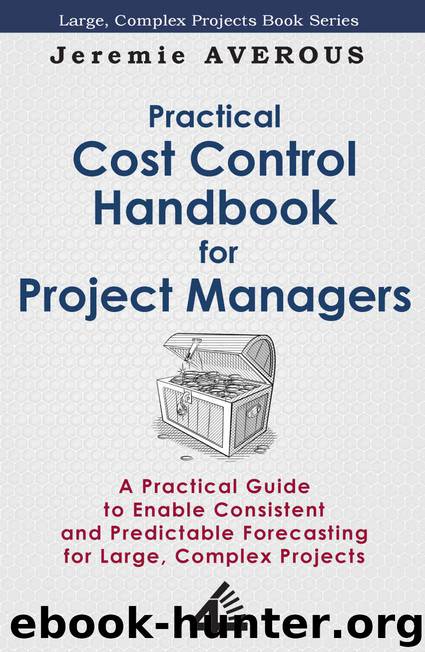Practical Cost Control Handbook for Project Managers: A Practical Guide to Enable Consistent and Predictable Forecasting for Large, Complex Projects by Jeremie Averous

Author:Jeremie Averous [Averous, Jeremie]
Language: eng
Format: azw3
Publisher: Fourth Revolution Publishing
Published: 2014-06-28T04:00:00+00:00
Fabrication
Depending on the contractual setup and the complication of the fabricated item, fabrication can be either based on measurable quantities for relatively well known and defined fabrication (forecast is then based on quantities and rates – type 1) or to contracts for services (for custom fabrications) (forecast is then based on actual cost and physical progress – type 2). Refer to the relevant section.
In all cases, the role of the project site representative and of the Budget Owner are essential in ensuring that an accurate report on physical progress is available from the fabricator, and that any useful information on the commercial position of the fabricator is provided. On large fabrications it is useful to mobilize Quantity Surveyors to check independently for actual work and physical progress. It is important that an appropriate allowance be available in the forecast for acceleration programs or other events like engineering changes that are unfortunately very frequent.
Cost Controllers need to be extremely cautious about the procurement of material for fabrication. Often the strategy for the procurement of this material changes during execution (typically, bulk standard material that was supposed to be procured directly by the project ends up being procured by the fabrication yard or taken from its stocks). This requires tight follow-up of budgets and possible transfers of budgets between Work Packages.
Best Practice: It is important that an appropriate allowance be available in the forecast from the beginning of the project for acceleration programs or other events like engineering and procurement schedule and strategy changes that are unfortunately very frequent. Benchmarks should be available from previous projects.
Fabrication yard costs are very dependent on the schedule (overall duration of the work). Whether the current schedule can be held can often be ascertained through some basic checks on the resources needed and the actual productivity compared to the planned productivity. The ramp-up speeds can also be checked for realism. When it becomes clear that the current schedule won’t be held, it means that either the works will continue for a significantly longer time, or that an acceleration program will be required, or that the project will have to accept significant carry-over work. In all cases, this means significant additional cost, which needs to be recognized in the cost forecast as soon as it becomes clear that the schedule cannot be held by continuing to work the same way. Such a view can generally be gained as soon as the yard reaches 20-30% of progress; by following these recommendations there should thus not be any last minute forecasting surprises.
Download
This site does not store any files on its server. We only index and link to content provided by other sites. Please contact the content providers to delete copyright contents if any and email us, we'll remove relevant links or contents immediately.
Hit Refresh by Satya Nadella(8844)
The Compound Effect by Darren Hardy(8488)
Change Your Questions, Change Your Life by Marilee Adams(7355)
Nudge - Improving Decisions about Health, Wealth, and Happiness by Thaler Sunstein(7227)
The Black Swan by Nassim Nicholas Taleb(6748)
Deep Work by Cal Newport(6534)
Daring Greatly by Brene Brown(6215)
Rich Dad Poor Dad by Robert T. Kiyosaki(6166)
Principles: Life and Work by Ray Dalio(5935)
Man-made Catastrophes and Risk Information Concealment by Dmitry Chernov & Didier Sornette(5636)
Playing to Win_ How Strategy Really Works by A.G. Lafley & Roger L. Martin(5443)
Digital Minimalism by Cal Newport;(5369)
Big Magic: Creative Living Beyond Fear by Elizabeth Gilbert(5336)
The Myth of the Strong Leader by Archie Brown(5226)
The Slight Edge by Jeff Olson(5195)
Discipline Equals Freedom by Jocko Willink(5152)
The Motivation Myth by Jeff Haden(4987)
Stone's Rules by Roger Stone(4845)
The Laws of Human Nature by Robert Greene(4763)
